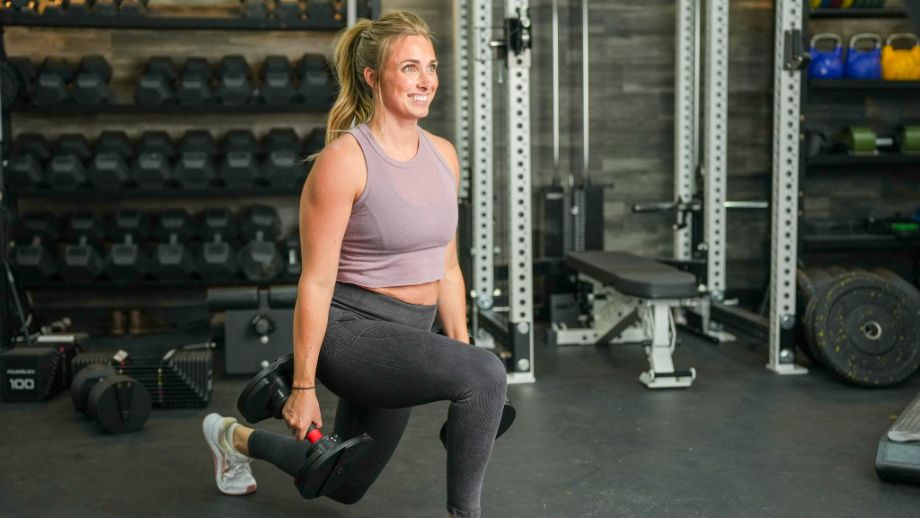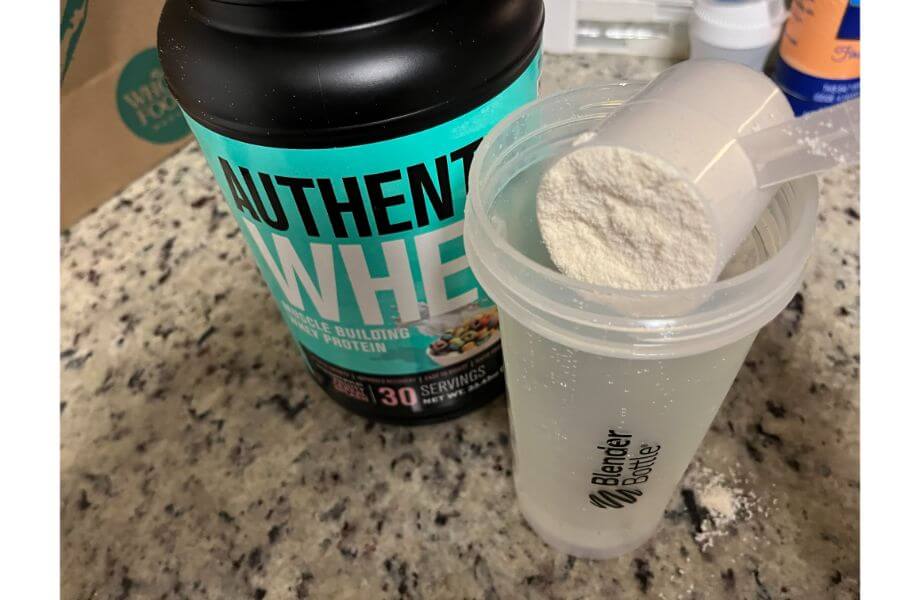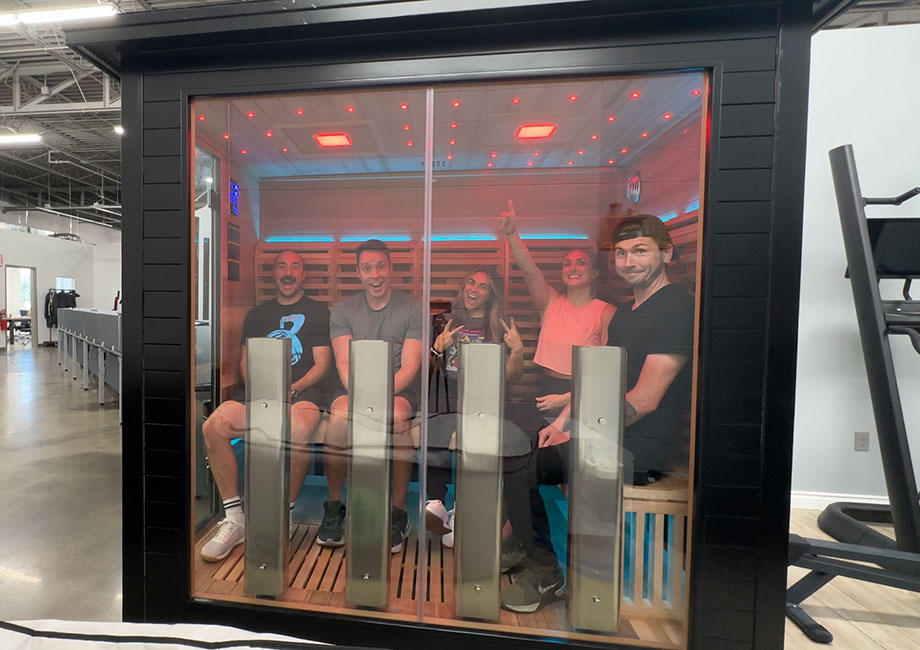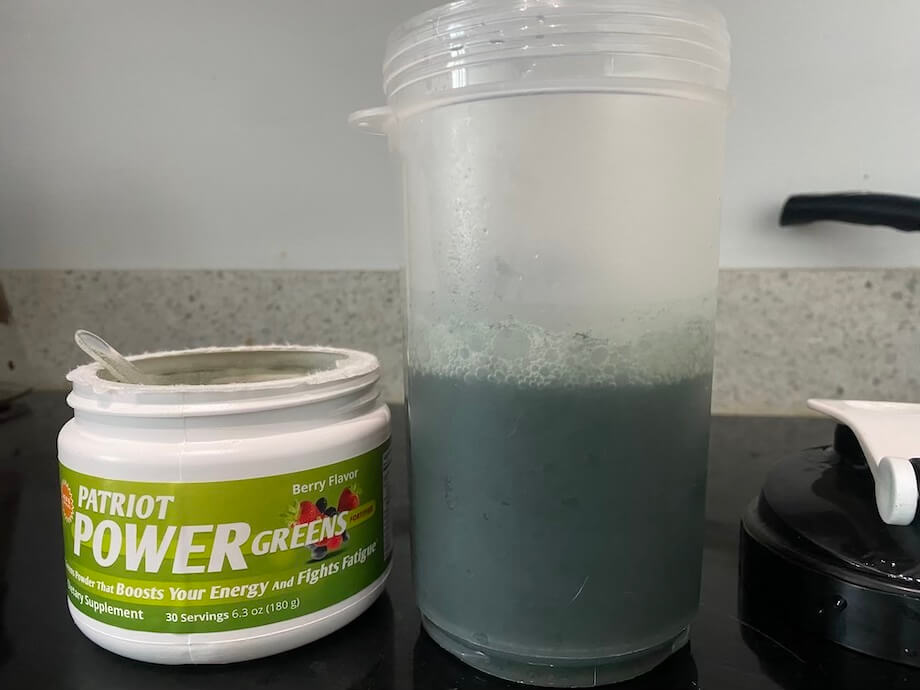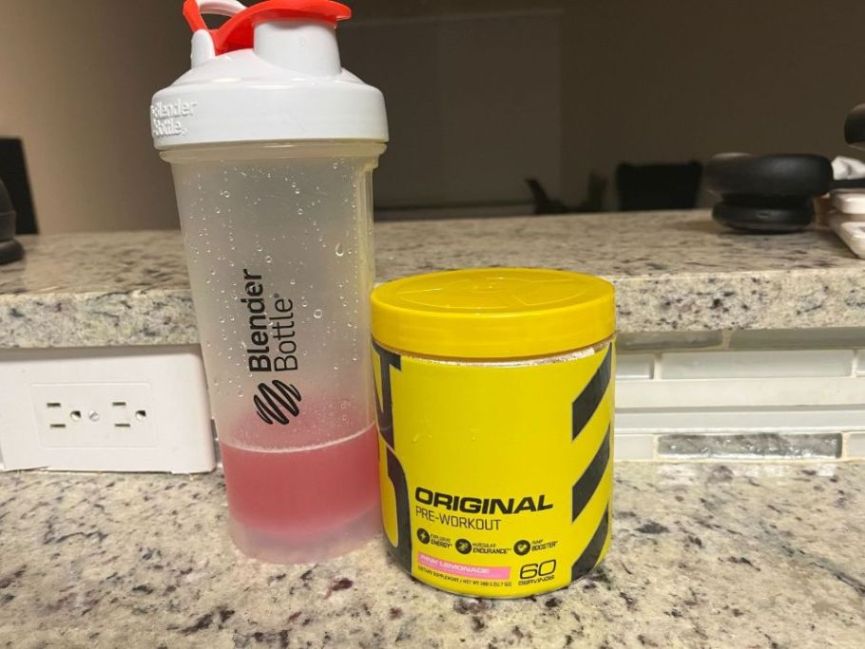Life comes at you fast, so you can’t afford to waste precious time with workouts that don’t, well, work. You need something proven and effective, something that gets you results in record time, something that lets you get into the gym, hit it hard, then get back to doing the other stuff that makes you the absolute legend you are.
That’s where HIIT comes in. This tried-and-true training protocol packs a complete workout into a short period of time, letting you get lots of work done without dedicating hours of your busy day.
RELATED: Steady State Cardio vs HIIT
You may be wondering, “What is HIIT? How do I do it, and how can it help me?” No worries; we have Kate Meier, NASM-CPT, USAW-L1, CF-L1, and part of the GGR editorial team, to answer these questions and more in our HIIT guide. Read on to find out more now!
What Is HIIT?
High-intensity interval training (HIIT) is a training modality that involves performing bursts of high-intensity exercise followed by periods of low-intensity exercise, active recovery, or rest.
The goal of HIIT training is to keep moving, so your heart rate stays in the ideal range, you’re constantly engaging your target muscles, and you’re totally torching calories from start to finish.
Because it’s performed at such a high intensity, HIIT is regarded as one of the most effective ways to approach your cardiovascular fitness and strength training today.
How Is HIIT Performed?
The overarching characteristic of all HIIT workouts is the structure: periods of intense exercise followed by a recovery period. What you do specifically during your HIIT sessions will depend on your fitness goals and what you’re working to build.
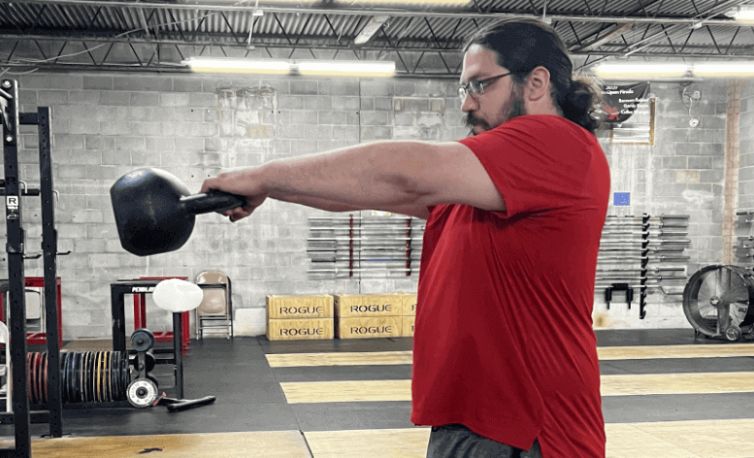
Here are a few different types of HIIT training:
- Cardio HIIT: Designed to improve cardio performance and raise your VO2 max with exercises and activities like sprinting, cycling, rowing, and/or calisthenics.
- Strength HIIT: Typically incorporates free weights, resistance bands, or machines to add weightlifting and strength training into your HIIT mix.
- Core HIIT: Features exercises like planks, Russian twists, and mountain climbers to increase your core strength and stability.
- Plyometric HIIT: An explosive workout for building power and cardio capacity using plyometric exercises, including box jumps, burpees, plyo push-ups, and more.
- Low-Impact HIIT: The polar opposite of plyometric HIIT, this approach uses bodyweight exercises that have low or no impact, like air squats, push-ups, and lunges, so you can get a great workout without beating up those precious joints.
Examples of HIIT Workouts
One of the coolest things about HIIT is that, as long as you’re structuring the workout with a proper work-to-rest ratio, you can pencil in basically whatever lifts or exercises you want.
However, thinking up new HIIT workouts for your training splits may take some practice if you’re new to fitness or unfamiliar with the HIIT format. So, here are a few sample HIIT workouts for all fitness levels that’ll get you rockin’ and rollin’ today!
15-Minute HIIT Workout for Beginners
“You want to perform at a high intensity for HIIT workouts, but you’ll do more harm than good if you overexert yourself and gas out early,” says Kate. “So, for this workout, take your time during the work intervals and focus on maintaining a pace you can keep up for the full workout.”
Our HIIT workout for beginners features longer rest periods, so you can catch your breath after each set, and requires no equipment, making it perfect for an at-home HIIT workout.
| Exercise | Sets | Work Interval | Rest Interval |
| Jumping Jacks | 3 | 20 seconds | 40 seconds |
| Bodyweight Squat | 3 | 20 seconds | 40 seconds |
| Push-Up | 3 | 20 seconds | 40 seconds |
| Mountain Climbers | 3 | 20 seconds | 40 seconds |
| Alternating Reverse Lunge | 3 | 20 seconds | 40 seconds |
Equipment needed: Exercise mat
Cardio HIIT Workout
Steady-state cardio remains one of the most popular ways to train, but is it the most effective if you’re really looking to build that engine and improve your stamina?
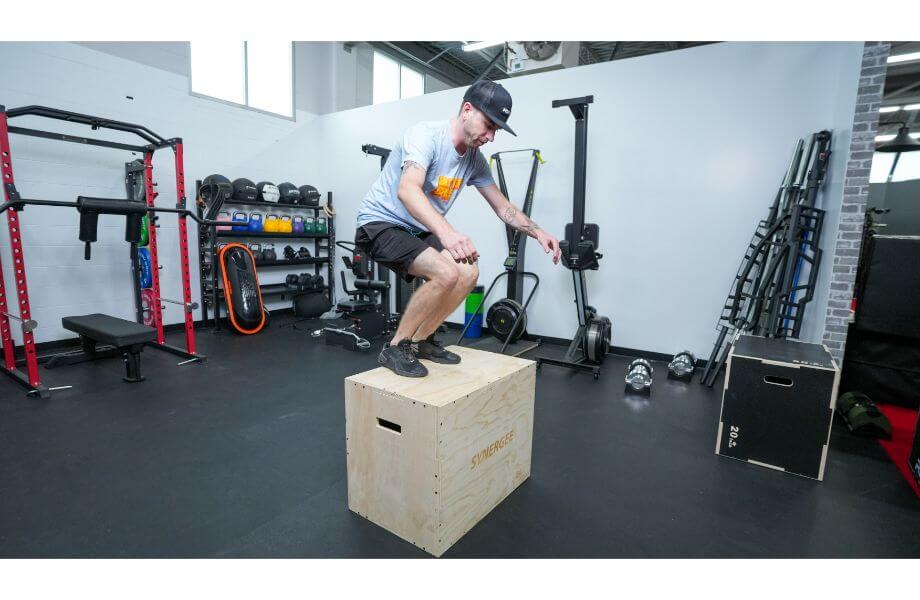
According to Medicine and Science in Sports and Exercise1, performing high-intensity aerobic intervals is “significantly more effective” than moderate-intensity aerobic exercise in regards to improving VO2 max.
That means, by performing cardio HIIT workouts like ours below, you may condition your body to deliver oxygen to your muscles more efficiently, giving them the fuel they need to keep going when the going gets tough!
| Exercise | Sets | Work Interval | Rest Interval |
| Kettlebell Swing | 3 | 40 seconds | 20 seconds |
| Burpees | 3 | 40 seconds | 20 seconds |
| Dumbbell Thruster | 3 | 40 seconds | 20 seconds |
| Box Jump | 3 | 40 seconds | 20 seconds |
| Plyo Push-Up | 3 | 40 seconds | 20 seconds |
Equipment needed: Kettlebell, a pair of dumbbells, plyo box, exercise mat
Strength HIIT Workout
Our strength HIIT workout mixes a variety of weightlifting movements to hit both your upper and lower body. You can use your choice of preferred free weight, but we’re writing it as a kettlebell HIIT workout because as long as you’re familiar with the technique of kettlebell cleans, you can perform every exercise with the same implement.
“Don’t bite off more than you can chew by going too heavy on this workout,” says Kate Meier, NASM-CPT, USAW-L1, CF-L1. “The goal is to keep moving for the full 40 seconds without burning out or letting your form completely deteriorate.”
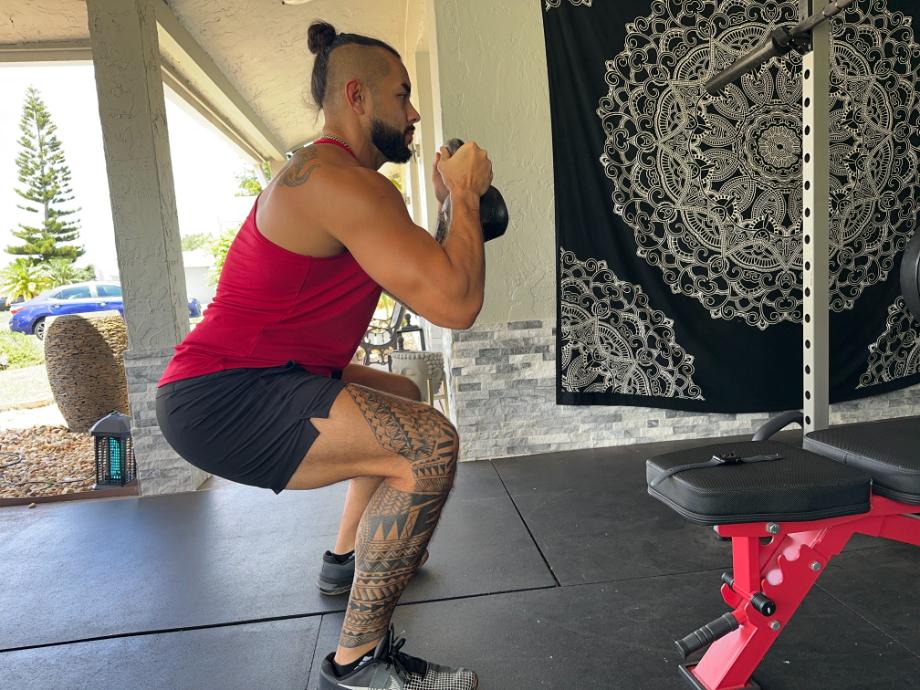
Aim to pick something you can move for approximately 8 to 12 reps before fatigue sets in. After a round or two, you’ll be thankful you didn’t go overboard.
| Exercise | Sets | Work Interval | Rest Interval |
| Suitcase Deadlift | 3-5 | 40 seconds | 20 seconds |
| Goblet Squat | 3-5 | 40 seconds | 20 seconds |
| Alternating Kettlebell Clean | 3-5 | 40 seconds | 20 seconds |
| Kettlebell Push Press | 3-5 | 40 seconds | 20 seconds |
Equipment needed: Two kettlebells
Benefits of HIIT
High-intensity interval training was developed with the belief that you could get better results by cranking up the intensity of your workouts up to eleven. We here at Garage Gym Reviews vouch wholeheartedly for the efficacy of HIIT and can’t recommend it more highly.
Here are some of the most significant benefits of HIIT.
Great Results in Less Time
According to a 2023 meta-analysis in the International Journal of Environmental Research and Public Health2, “the effect of HIIT on fat loss and [cardiorespiratory fitness]…is similar to or better than moderate-intensity cardio training,” which is great in and of itself.
But, that’s not all; the meta-analysis also concluded that “HIIT appears to be more time-saving and enjoyable,” meaning you can stave off boredom by keeping your fitness routine varied and get similar or better results in a shorter amount of time. That’s a win-win in our book!
May Produce a Higher Post-Exercise Calorie Burn
What if we told you that performing high-intensity workouts like HIIT burned a massive amount of calories both during and after the workout?
We know that sounds too good to be true, but studies show it may very much be true, and it’s all thanks to this thing called excess post-exercise oxygen consumption (EPOC), colloquially called the “afterburn effect.”
RELATED: What Is EPOC?
“EPOC refers to the calories your body needs to burn in order to recover after exercise,” says Kate, “meaning you’ll continue burning calories long after your cooldown. Exactly how long the effect lasts may vary, but studies suggest it’s related to the intensity of your workout.”
According to a review in the Journal of Sports Science3, high-intensity exercise produces greater EPOC and may provide an additional 6% to 15% total calorie burn after you finish your workout.
That’s not all: A 2024 study in Scientific Reports4 confirmed the same, stating that “HIIT results in greater total [energy expenditure] and EPOC” compared to moderate-intensity cardio workouts.
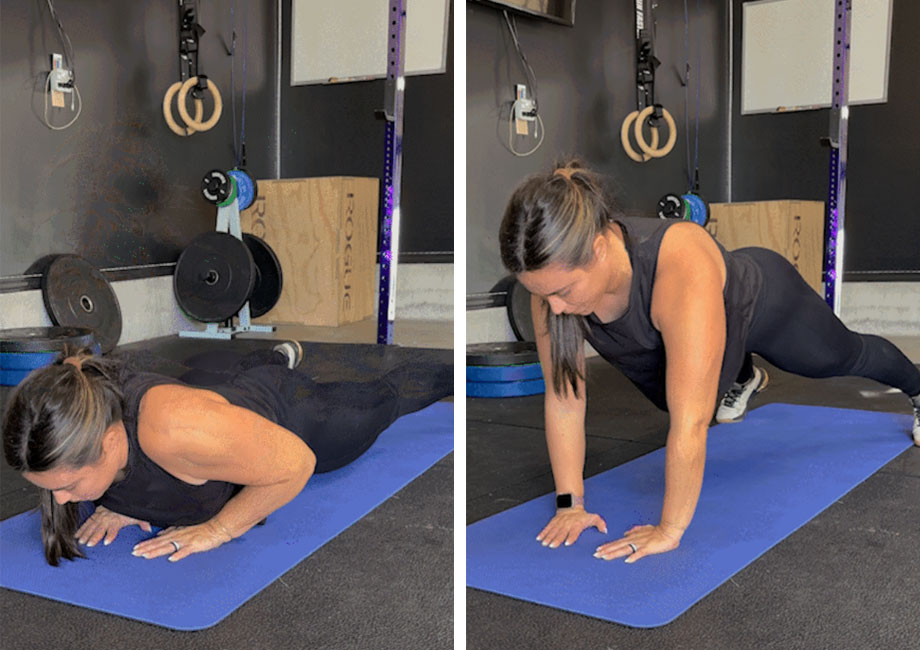
So, because of EPOC, HIIT is the gift that keeps on giving!
May Improve Body Composition
A 2020 study in Medicine and Science in Sports and Exercise5 concluded that HIIT is effective even in small doses after they observed “improved cardiorespiratory fitness, body composition, and blood pressure in overweight/obese adults” after an 8-week HIIT program that features only one workout per week.
The study also observed improvements to the participants’ aerobic capacity, resting heart rate, body fat percentage, and insulin resistance, suggesting that you may receive numerous health benefits from even a single bout of HIIT exercise.
RELATED: How To Lose Body Fat
Are There Any Disadvantages of HIIT?
There are few absolutes in fitness, meaning even something as effective and exalted as HIIT has its downsides. Familiarize yourself with the following disadvantages of HIIT before starting an HIIT program, so you’re aware of the risks before you begin.
You Risk Overtraining
HIIT workouts pack so much punch in such a small period of time that you may not realize the impact it has on your body. And, if we could impart one lesson, it’s that you’re not making gains from your work in the gym, you’re making gains from recovering from your work at the gym.
Performing HIIT workouts that are too long or too frequent works against your goals and often leaves you feeling sore, tired, beat up, and begging for an impromptu rest day when you could be back in that gym killin’ it!
So, don’t go overboard with the HIIT. And, if you’re not sure exactly what overboard is, consult a personal trainer or other fitness professional for guidance and personalized advice.
RELATED: How Much HIIT Per Week Should You Do?
You Risk Working Out With Improper Form
Moving through your resistance training at a comfortable pace often allows you to fully recharge between sets, but the breakneck pace combined with the high-repetition nature of HIIT workouts often means you’re blasting out the reps under extreme fatigue.
The result: shoddy form that hinders your results and increases your risk of injury.
We know it’s hard to keep your composure when you’re working out at what’s basically your maximum heart rate, but, for your health and safety, you need to find that line and tread lightly as you approach it. It’s always better to do fewer total reps, as long as you’re doing them with perfect form, than it is to work out with improper form.
You May Exacerbate Symptoms of Heart Disease
Studies show6 that regular physical activity is beneficial for cardiovascular health, but HIIT may negatively influence heart health if the parameters are not carefully programmed for individuals suffering from heart disease.
According to the American Journal of Cardiology7, the high-intensity nature of HIIT may be too much for some patients and actually increase rather than reduce the likelihood of triggering a cardiac event or inducing musculoskeletal injury.
Those with heart conditions and other pre-existing health conditions should discuss their risk factors with a doctor or other qualified healthcare professional before starting a HIIT program.
What Is HIIT? Final Thoughts
Time is a commodity that few of us can afford in today’s fast-paced society, so it’s imperative you make every second of your time in the gym count. One of the best ways of doing that is by working HIIT workouts into your fitness routine.
HIIT workouts can:
- Improve muscle strength, size, endurance, and stamina
- Save you time compared to lower-intensity exercise
- Produce a greater post-exercise calorie burn
- Promote better health and well-being
That said, HIIT workouts are seriously tough, so they’re not for the (literal) faint of heart. So, to make sure you’re a good candidate for this highly-effective training type, be sure to consult your doctor or other qualified healthcare profession before giving it a try.
And, once you’re medically cleared, we strongly recommend that you do try HIIT and see how this super intense form of exercise may help you accomplish your fitness goals today.
Time’s a-wastin’! Let’s get it, people!!
What Is HIIT? FAQs
Is 20 minutes of HIIT per day enough?
Absolutely. The World Health Organization8 recommends that all adults engage in between 150 and 300 minutes of moderate-intensity exercise or 75 to 150 minutes of vigorous-intensity exercise each week to meet the minimum threshold for physical activity.
So, doing 20 minutes of HIIT every day adds up to 140 minutes of vigorous activity, more than meeting the bare minimum and bordering on being too much.
Is HIIT good for weight loss?
HIIT obliterates calories both during and after the workout, making it great for those looking to shed some excess weight. For the best results, supplement your HIIT with eating right, drinking plenty of water, and getting enough rest each night.
Is HIIT better than cardio?
Not necessarily.
HIIT workouts will seriously challenge you, providing various health and fitness benefits in the process, but the stress it puts on your body may not be sustainable and result in you missing time in the gym trying to recover.
Likewise, steady-state cardio is performed at a lower intensity, which means you need more time to burn as many calories, but it’s generally easier on the body and may boost confidence as your fitness level slowly improves as a result.
Ultimately, the best type of training for you will be the one you can stick with for the long haul.
How should a beginner start HIIT?
Our above HIIT workout for beginners is a great place to get started, but just about any HIIT workout should be fine provided you’re moving at a manageable pace, maximizing how many seconds of rest you get each round, and putting proper form over all else.
Don’t forget to begin with a good warm-up to really make sure you’re primed and ready!
References
- Helgerud, J., Høydal, K., Wang, E., Karlsen, T., Berg, P., Bjerkaas, M., Simonsen, T., Helgesen, C., Hjorth, N., Bach, R., & Hoff, J. (2007). Aerobic high-intensity intervals improve VO2max more than moderate training. Medicine and Science in Sports and Exercise, 39(4), 665–671. https://doi.org/10.1249/mss.0b013e3180304570
- Guo, Z., Li, M., Cai, J., Gong, W., Liu, Y., & Liu, Z. (2023). Effect of High-Intensity Interval Training vs. Moderate-Intensity Continuous Training on Fat Loss and Cardiorespiratory Fitness in the Young and Middle-Aged a Systematic Review and Meta-Analysis. International Journal of Environmental Research and Public Health, 20(6), 4741. https://doi.org/10.3390/ijerph20064741
- LaForgia, J., Withers, R. T., & Gore, C. J. (2006). Effects of exercise intensity and duration on the excess post-exercise oxygen consumption. Journal of Sports Sciences, 24(12), 1247–1264. https://doi.org/10.1080/02640410600552064
- Jiang, L., Zhang, Y., Wang, Z., & Wang, Y. (2024). Acute interval running induces greater excess post-exercise oxygen consumption and lipid oxidation than isocaloric continuous running in men with obesity. Scientific Reports, 14(1), 9178. https://doi.org/10.1038/s41598-024-59893-9
- Chin, E. C., Yu, A. P., Lai, C. W., Fong, D. Y., Chan, D. K., Wong, S. H., Sun, F., Ngai, H. H., Yung, P. S. H., & Siu, P. M. (2020). Low-Frequency HIIT Improves Body Composition and Aerobic Capacity in Overweight Men. Medicine and Science in Sports and Exercise, 52(1), 56–66. https://doi.org/10.1249/MSS.0000000000002097
- Nystoriak, M. A., & Bhatnagar, A. (2018). Cardiovascular Effects and Benefits of Exercise. Frontiers in Cardiovascular Medicine, 5, 135. https://doi.org/10.3389/fcvm.2018.00135
- Quindry, J. C., Franklin, B. A., Chapman, M., Humphrey, R., & Mathis, S. (2019). Benefits and Risks of High-Intensity Interval Training in Patients With Coronary Artery Disease. The American Journal of Cardiology, 123(8), 1370–1377. https://doi.org/10.1016/j.amjcard.2019.01.008
- Bull, F. C., Al-Ansari, S. S., Biddle, S., Borodulin, K., Buman, M. P., Cardon, G., Carty, C., Chaput, J. P., Chastin, S., Chou, R., Dempsey, P. C., DiPietro, L., Ekelund, U., Firth, J., Friedenreich, C. M., Garcia, L., Gichu, M., Jago, R., Katzmarzyk, P. T., Lambert, E., … Willumsen, J. F. (2020). World Health Organization 2020 guidelines on physical activity and sedentary behaviour. British Journal of Sports Medicine, 54(24), 1451–1462. https://doi.org/10.1136/bjsports-2020-102955




